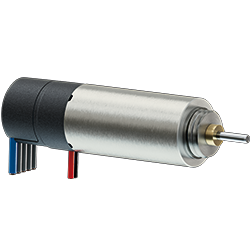Neya Systems LLC Integrates UxAB with QinetiQ North America's TALON V
Neya Systems has successfully integrated its UxAB autonomy hardware and software with the QinetiQ North America (QNA) TALON V platform.
Wexford, PA October 13, 2014
Neya Systems has successfully integrated its UxAB autonomy hardware and software with the QinetiQ North America (QNA) TALON V platform.
As a part of Neyas growing Ux line of products, UxAB™ draws together years of capability development in autonomy, sensor processing, localization, manipulator control, and advanced navigation GPS-based and GPS-denied navigation into a single rugged package.
UxAB™ has been developed from the ground up to be a robust, hardened, self-contained autonomy module. Designed to IP67 specifications, with integrated EMI and EFI protection, and a temperature operating range of -20 to 140F, UxAB™ is built to operate in the most challenging environments where our newest unmanned ground vehicles will be deployed.
"Integration of UxAB with the TALON V went extremely smoothly due to the use of the RS-JPO Interoperability Profiles (IOP), that Neya and QNA support," said Dr. Parag Batavia, president of Neya Systems, "The ease of systems-level integration because of IOP allowed us to focus on maximizing performance of the autonomy capabilities that UxAB offers."
"The UxAB integrated almost seamlessly with the TALON V robot. Both the robot and the autonomy box use IOP messaging which allows for automatic discovery of available services. The UxAB then leverages sensor data from the TALON V as well as its own sensor data to command the TALON V to perform autonomous tasking accurately, reliably and easy for the war fighter. The most impressive part of the integration was the significantly reduced time to bring the systems together versus past integration efforts on previous generation robots. The effort took a fraction of the time, just days instead of months, required fewer resources, and produced superior results," said Dan Deguire, QinetiQ North Americas senior program director of Unmanned Systems.
UxAB is compatible with AEODRS 1.4 SAE JAUS specifications, as well as IOP V1.
About Neya Systems LLC
Neya Systems is one of the leading developers of advanced unmanned systems technologies in the United States. Neya works with defense, homeland security, and commercial customers to deliver novel solutions to some of the hardest problems related to autonomy, computer vision, and general unmanned systems development and deployment. Both government- and commercial-sector engineering managers consistently turn to Neyas team when seeking expertise related to perception in difficult visual conditions.
About QinetiQ North America
QinetiQ North America delivers world-class technology and revolutionary products to defense, security and commercial markets worldwide. QinetiQs product offerings include survivability, unmanned systems to power sensors and control systems and transportation solutions. Customers rely on QinetiQ products to increase readiness, improve mission effectiveness, streamline operations, increase situational awareness and enhance security. QinetiQ North America is a wholly owned, independently operated subsidiary of QinetiQ Group PLC, one of the worlds leading defense and security technology companies. QNA is headquartered in Waltham, Massachusetts. For more information visit http://www.qinetiq-na.com.
For more information, visit http://www.neyasystems.com
Featured Product

FAULHABER MICROMO - Impressive accuracy through the latest chip technology
With the launch of the IEP3, FAULHABER expands its product line with an incremental encoder which, thanks to the latest chip technology, achieves a very high resolution and accuracy. With a diameter of just 8 mm, the IEP3 is very lightweight and compact yet still offers a resolution of up to 10,000 lines per revolution - made possible by the latest chip technology with high interpolation. In the standard version, the resolution is freely programmable from 1 - 4,096 lines per revolution. Moreover, the chip technology that is used ensures a high positional accuracy of typically 0.3 °m as well as a high repeatability of typically 0.05 °m thanks to accuracy compensation.
